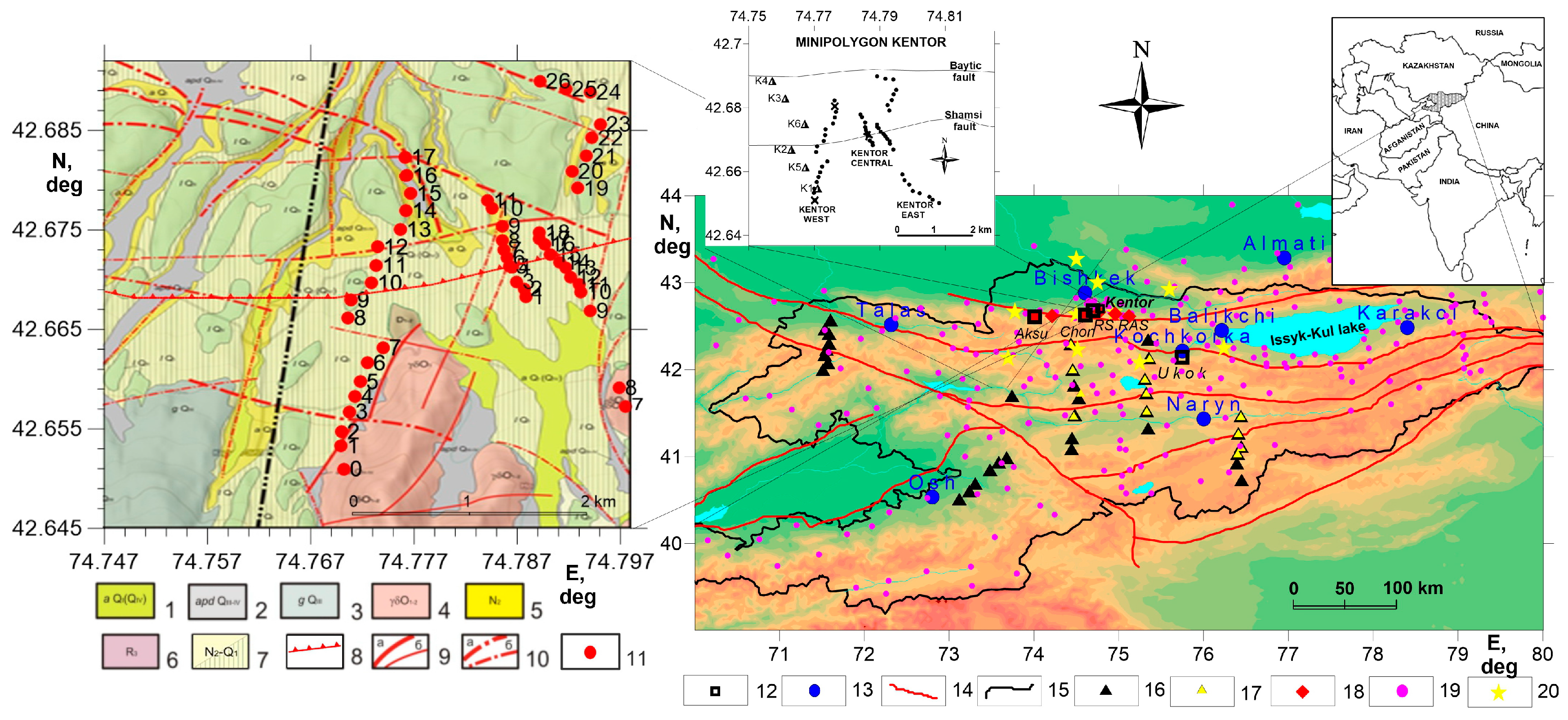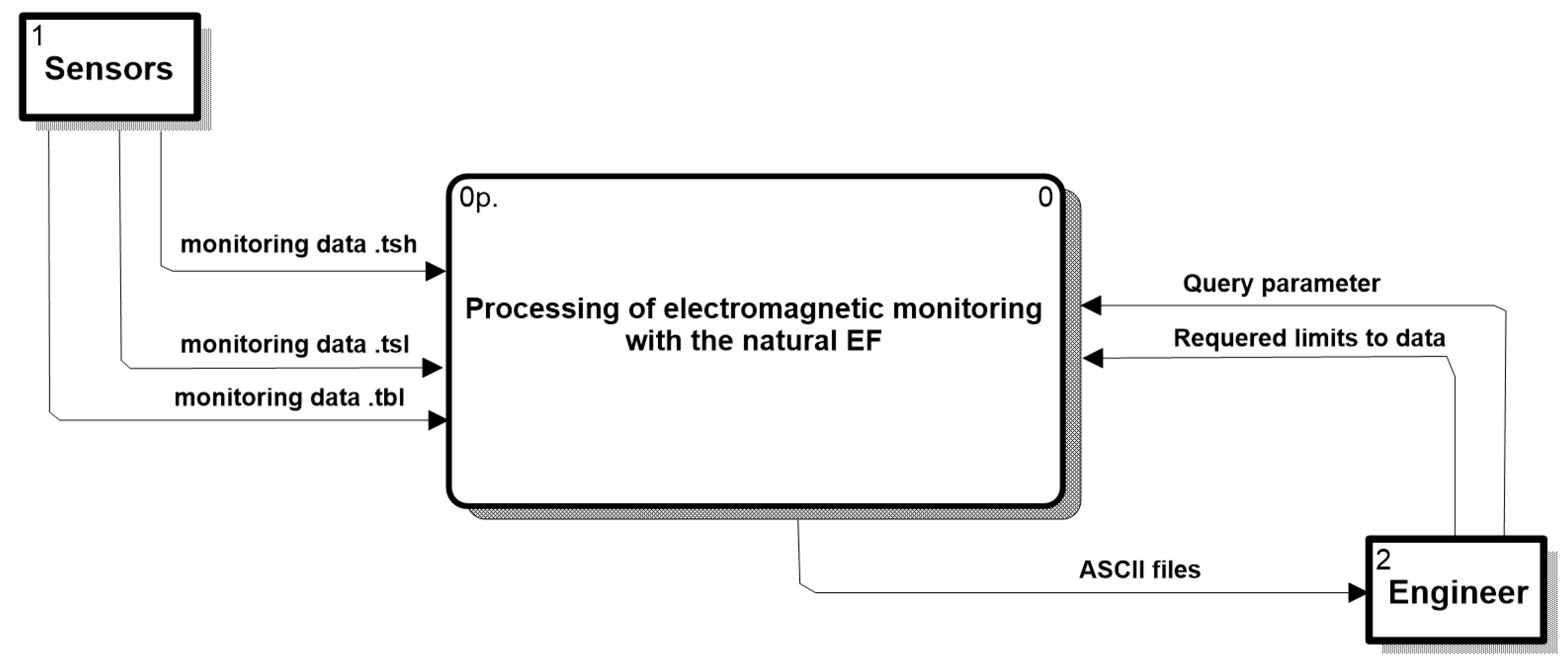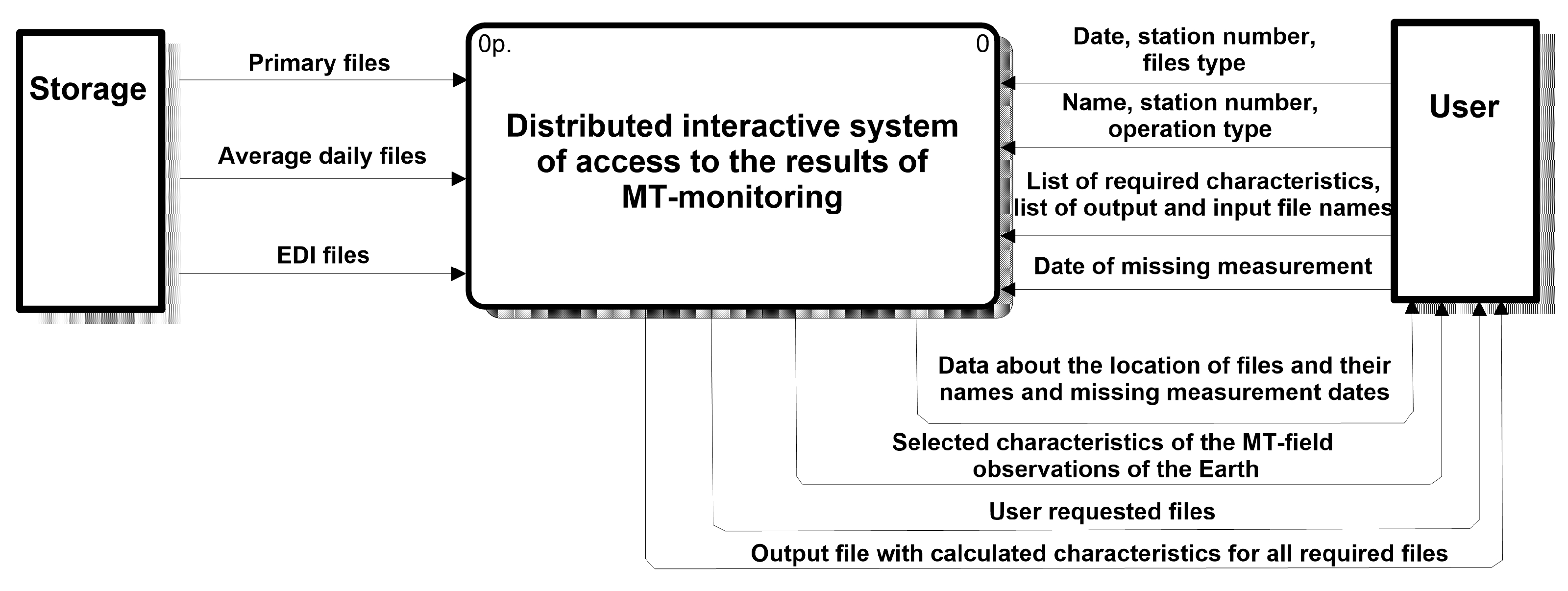System for Collecting, Processing, Visualization, and Storage of the MT-Monitoring Data
Abstract
:Abstract
Dataset
1. Summary
2. Data Description
2.1. Data Collection Procedure
2.2. Structure and Data Processing of the Magnetotelluric Sounding (MTS) Method
2.3. Structure and Storage of Magnetotelluric (MT) Data
3. Methods
Description of the Main Functions of the System
4. User Notes
5. Patents
Author Contributions
Funding
Conflicts of Interest
References
- Rybin, A.; Fox, L.; Ingerov, O.; Schelochkov, G.; Safronov, I.; Batalev, V.; Bataleva, E. MT monitoring experiment in the Northern Tien Shan seismogenic zone/CD ROM: Abstracts. In Proceedings of the 10-th Scientific Assembly of the International Association of Geomagnetism and Aeronomy, Toulouse, France, 18–25 July 2005. [Google Scholar]
- Rybin, A.K.; Batalev, V.Y.; Bataleva, E.A.; Matiukov, V.E.; Desyatkov, G.A.; Lychenko, N.M.; Manzhikova, S.T.; Ten, V. Development of a distributed interactive system of access to the results of magnetotelluric monitoring. In Proceedings of the Problems of geodynamics and geoecology of intracontinental orogens VII International Symposium, Bishkek city, Kyrgyz Republic, 19–24 June 2011; pp. 179–187. [Google Scholar]
- Bataleva, E.A.; Batalev, V.Y.; Rybin, A.K. On the question of the interrelation between variations in crustal electrical conductivity and geodynamical processes. Izvestiya Phys. Solid Earth 2013, 49, 402–410. [Google Scholar] [CrossRef]
- Lyubushin, A.A. Multidimensional analysis of the time series of geophysical monitoring systems. Izvestiya Phys. Solid Earth 1993, 3, 103–108. [Google Scholar]
- Bataleva, E.A.; Batalev, V.Y. Development of Programs to Analyze the Data on Azimuthal Magnetotelluric Monitoring Part 1. Analysis of magnetotelluric monitoring data. Vestnik Kyrgyz-Slavic University 2014, 14, 3–7. [Google Scholar]
- Bataleva, E.A.; Batalev, V.Y. Development of Programs to Analyze the Data on Azimuthal Magnetotelluric Monitoring Part 2. Development of software for analysis of MT monitoring data. Vestnik Kyrgyz-Slavic University 2014, 14, 8–12. [Google Scholar]
- Bataleva, E.A.; Zabinyakova, O.B.; Batalev, V.Y. Software Development for Monitoring Electromagnetic Parameters of the Bishkek Geodynamic Providing Group. Vestnik Kyrgyz-Slavic University 2017, 17, 144–149. [Google Scholar]
- Bataleva, E.A.; Zabinyakova, O.B.; Batalev, V.Y. Development for Magnetotelluric Profile Monitoring Cantor’s Minipoligon. Vestnik Kyrgyz-Slavic University 2017, 17, 150–153. [Google Scholar]
- Date, C.J. What is distributed database? Available online: ftp://sohoftp.nascom.nasa.gov/pub/www/publications/chapter10.pdf (accessed on 3 March 2019).
- Infological modeling. Available online: http://www.rus-lib.ru/book/28/ps/01/027-044.html (accessed on 15 April 2019).
- Maklakov, S.V. BPwin and ERwin—CASE-development tools for information systems. M.: Dialog-MEPI. 1999. Available online: https://studfiles.net/preview/942930/page:10/ (accessed on 10 May 2019).




© 2019 by the authors. Licensee MDPI, Basel, Switzerland. This article is an open access article distributed under the terms and conditions of the Creative Commons Attribution (CC BY) license (http://creativecommons.org/licenses/by/4.0/).
Share and Cite
Bataleva, E.; Rybin, A.; Matiukov, V. System for Collecting, Processing, Visualization, and Storage of the MT-Monitoring Data. Data 2019, 4, 99. https://doi.org/10.3390/data4030099
Bataleva E, Rybin A, Matiukov V. System for Collecting, Processing, Visualization, and Storage of the MT-Monitoring Data. Data. 2019; 4(3):99. https://doi.org/10.3390/data4030099
Chicago/Turabian StyleBataleva, Elena, Anatoly Rybin, and Vitalii Matiukov. 2019. "System for Collecting, Processing, Visualization, and Storage of the MT-Monitoring Data" Data 4, no. 3: 99. https://doi.org/10.3390/data4030099
APA StyleBataleva, E., Rybin, A., & Matiukov, V. (2019). System for Collecting, Processing, Visualization, and Storage of the MT-Monitoring Data. Data, 4(3), 99. https://doi.org/10.3390/data4030099





